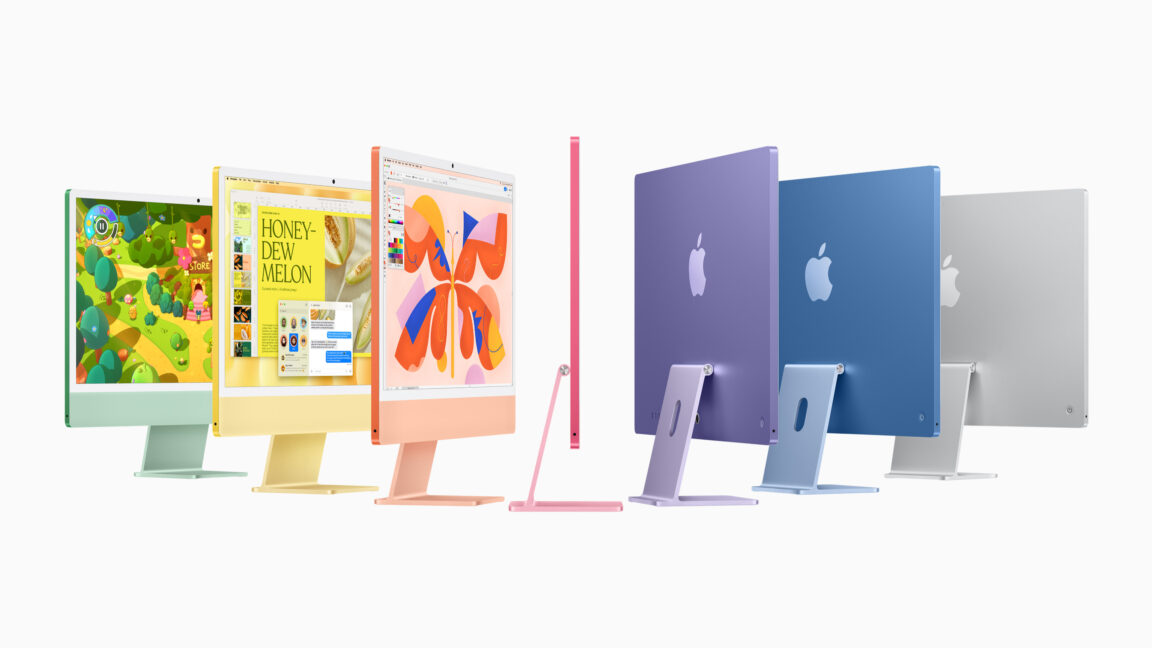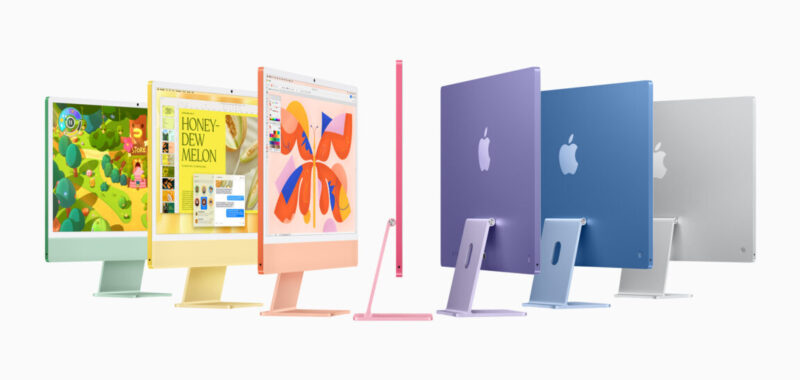
For $1,499, Apple will bump you up to a fully enabled M4 chip with 10 CPU cores (four performance cores, six efficiency cores) and 10 GPU cores, four Thunderbolt/USB 4 ports on the back, a gigabit Ethernet port built into the machine’s external power brick, and a Touch ID-equipped Magic Keyboard. For $1,699, you get the same machine but with 512GB of storage instead of 256GB. And for $1,899, you get the same machine but with 24GB of RAM in addition to that 512GB storage upgrade.
The different iMac tiers are also differentiated by available upgrades. The iMacs with 256GB of storage can be bumped to 24GB of RAM for an additional $200. The $1,299 iMac can be upgraded to 512GB or 1TB of storage for $200 and $400, respectively. The $1,499 and $1,699 iMacs can be upgraded to 32GB of RAM for $400, but only when configured with 512GB or more of storage. The more-expensive iMacs also offer 2TB of storage for $800 and a nano-texture glass screen option for $200. Swapping from the Magic Mouse to a Magic Trackpad costs $50 across all models.
Aside from the USB-C ports on the external accessories, the only other external change to the iMac this year is that all seven color options—blue, purple, pink, orange, yellow, green, and silver—are available across all iMac prices and configurations. In previous generations, a few of the colors were only available in the more-expensive iMac models. Judging from Apple’s comparison page, all of the colors also appear to be just a tiny bit lighter than they were last year—it’s the most noticeable in the pink and yellow models, but in all cases it would probably be hard to tell without the old colors and the new ones side by side.
Since they’ll all launch running macOS Sequoia 15.1, these Macs will also support all available Apple Intelligence features out of the box, but these features will also work on any Apple Silicon Mac that has been updated to macOS 15.1.

